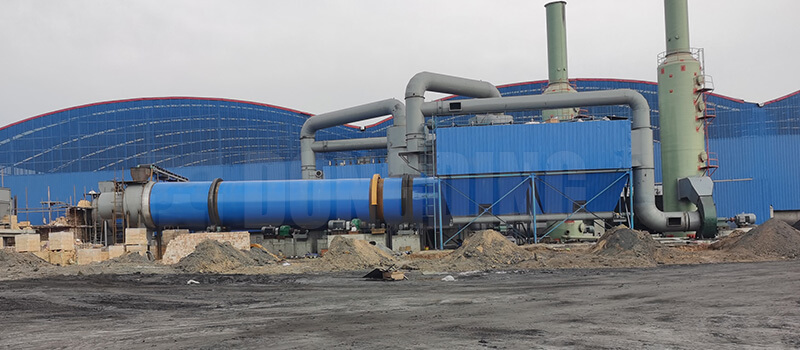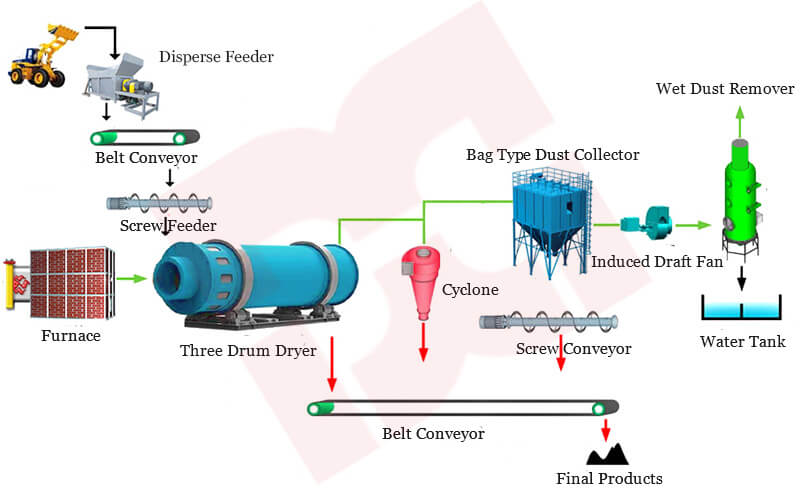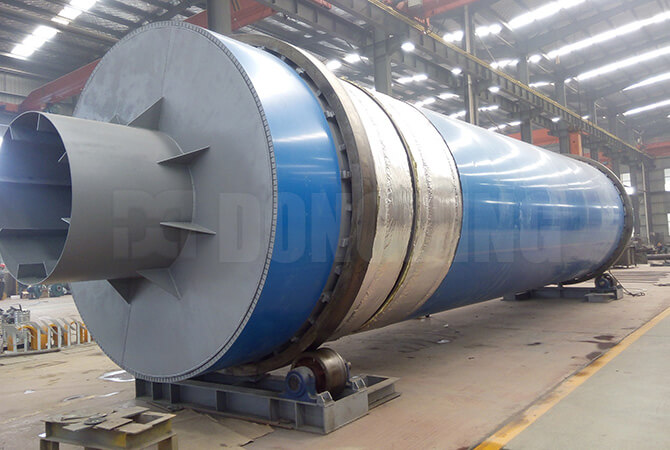Gypsum Dryer

Desulfurization Gypsum Dryer Introduction
Gypsum is a kind of mineral, its main chemical component is calcium sulfate. Desulfurization gypsum is the industrial by-product gypsum obtained after the treatment of sulfur dioxide in flue gas by coal-fired or oil-fired industrial enterprises. The FGD gypsum dryer is an environment-friendly drying equipment, mainly used for drying desulfurization gypsum. The complete FGD gypsum drying system is mainly composed of heat source, dispersing device, conveying equipment, rotary dryer, transmission device, dust removal device, induced draft system, and power distribution cabinet.
Advantages of FGD Gypsum Dryer
♠ Strong overload resistance, large processing capacity, less fuel consumption and low drying cost.
♣ The concurrent flow drying method is more conducive to the evaporation of moisture in gypsum by high temperature, and improves the thermal efficiency.
♥ The new designed feeding and discharging device eliminates the feeding blockage, discontinuity, unevenness and the materials return, thus reducing the load of the dust removal system.
♦ The operating parameters can be changed according to different material properties, and the final moisture can be flexibly adjusted according to customers’ needs.
♠ Multiple heat sources can be selected, such as clean coal, biomass, fuel gas and steam.

FGD Gypsum Dryer Wide Application
The FGD gypsum dryer is special designed for processing powdery and granular materials with special requirement, such as desulfurization gypsum, phosphogypsum, sludge, bentonite, ore, blast furnace slag, coal, metal powder, phosphate fertilizer, ammonium sulfate, etc. It is widely used in the industries of cement, mining, building materials, chemical industry, grain, compound fertilizer production and other industries.
How does the Gypsum Dryer Machine Work?
The desulfurized gypsum is conveyed to the inner layer of the three-layer drum by the feeding device to realize the downstream drying. Then the desulfurized gypsum is continuously lifted and scattered in a spiral way to achieve heat exchange under the effect of the lifting board. The FGD gypsum moves to the other end of the inner layer and enters the middle layer for countercurrent drying. Finally, the gypsum moves to the other end of the middle layer and falls into the outer layer. The gypsum moves in a rectangular multi-loop way in the outer layer of the drum. Finally, the gypsum is discharged outside under the action of hot air. After being treated by desulfurization and dedusting equipment, the exhaust gas meets the requirements of environmental protection standards and is discharged out of the system.

Gypsum Dryer Working Video
FGD Gypsum Dryer Technical Parameters
| Model | Drum Size (m) | Capacity (t/h) | Initial Moisture(%) | Final Moisture(%) | Power(kw) |
| DDSG16 | Φ1.6*16.5 | 3-5T/h | 20±3 | ≤10 | 57 |
| DDSG18 | Φ1.8*18 | 5-7T/h | 20±3 | ≤10 | 60.5 |
| DDSG20 | Φ2.0*20 | 7-10T/h | 20±3 | ≤10 | 80 |
| DDSG22 | Φ2.2*20 | 10-15T/h | 20±3 | ≤10 | 95 |
| DDSG25 | Φ2.5*22 | 15-20T/h | 20±3 | ≤10 | 108.5 |


